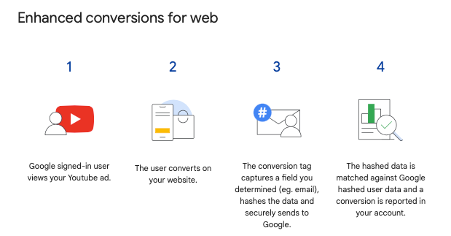Digital Privacy & Personal Data
13 May 2022
A hot topic of the moment in digital marketing is privacy. What data is free to be shared, and what has the right to privacy when it comes to our digital footprint. This can be anything from your Google search behaviour, to the landing pages you spend the most time on, even down to your general interests and geographic location.
So, if you haven’t already – you’re about to hear a LOT about 1st party data versus 3rd party data, and how to navigate these privacy changes through 2022-2023 to ensure you can still gain valuable insights from your digital marketing activity.
In the UK, a great deal of these changes in regulations have been down to GDPR laws. Understanding who has your data, why they have it, how long they hold it for, and giving you the chance to know what that looks like – and of course restrict their use of it. Now, for some industries that’s straight forward, but in the world of digital – it’s MAJOR.
You will have heard of Cookies – at least in the footer that appears on almost every website these days asking you for permission to track you following a website visit. What happens is approving that sees a Cookie attached to your online behaviours and shared with the website owner. This is how valuable data can be built on buyer personas and key audiences for businesses. Besides, how can a business know how to attract the right people if they don’t know anything about said people, right?! Well, it’s all about to change.
Google are always at the forefront of privacy, and their announced change to GA4 in July 2023 has really shaken things up! They are the first major brand globally to shift exclusively from 3rd party data to only 1st party data – And while we’re here, Safari and Firefox have already stopped supporting 3rd party cookies, along with Chrome - aka, giving you, the party, the chance to approve or deny if your data is shared. So, what’s the difference?
Simplified - If you’re retargeted by an ad from a website that you have been visiting – that’s 1st party data and you’ve consented to it. If you’re retargeted by an ad from a website you never visited, the company owning that site is advertising using 3rd party data - data that they didn’t collected themselves. 3rd party data is simply someone else’s 1st party data.
Now, if you’re reading this going – how on earth does this make sense, and what do I need to do to get ahead of this?! – don’t worry. Loud Mouth Media can help advise you through these changes, and ensure you get the data required to still make informed business decisions. But the key takeaway is that these changes will impact two main areas of digital marketing, targeting, and tracking:
For Google Ads, a key way to weather this change, and come out of it stronger than ever, is to concentrate now on building your own 1st party data. It won’t happen overnight, but the more ahead of these changes you are, the better it will be in the long run; and Enhanced Conversions is a way Loud Mouth are advising their active clients.
“Enhanced conversions is a feature that can improve the accuracy of your conversion measurement and unlock more powerful bidding. It supplements your existing conversion tags by sending hashed first-party conversion data from your website to Google in a privacy-safe way.” (Google)
In other words, when a customer completes a conversion on your website, you may receive first-party customer data such as an email address, name, home address and/or phone number. This personal data can now be captured in your conversion tracking tags, hashed, sent to Google in its hashed form, and then compared with Google’s hashed database to find a match and attribute value more accurately.

Enhanced conversions will only work for conversion actions where customers have to input personal data like subscriptions, sign-ups and purchases. One or more of the following pieces of customer data must be available:
Our friends in Paid Social are seeing the same privacy changes. With the 2021 Apple iOS update, it completely changed how information is shared to the likes of Facebook. So regardless of your platform of choice for digital advertising, it’s key to get ahead of it and get that all important 1st party data.
If you have any questions on privacy changes and data sharing through digital channels, get in touch with our expert team. As a Google Premier Partner, Loud Mouth Media have access to valuable insights and tools to assist in this privacy movement.